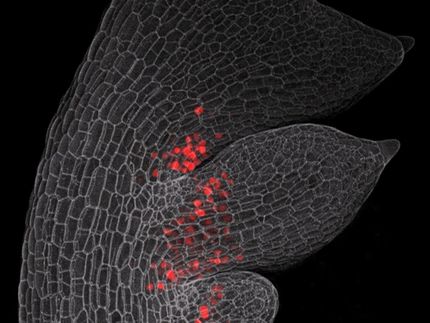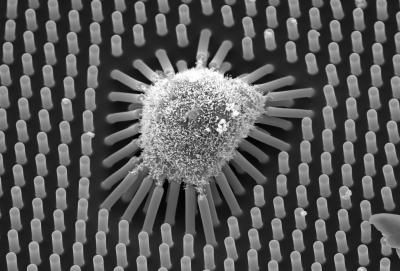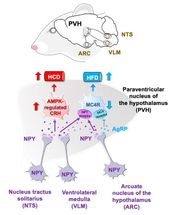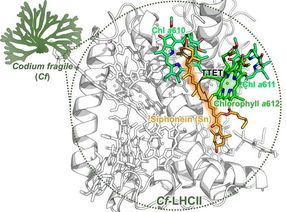A Journey back in time to the origin of stem cells
Proteins that regulate animal stem cells are much older than animals themselves
Advertisement
A new study published in Nature Communications reveals that critical proteins involved in animal stem cell regulation are much older than previously thought, predating the origin of animals that likely evolved more than 700 million years ago. The international research team included scientists from the group of Dr. Georg Hochberg at the Max Planck Institute for Terrestrial Microbiology in Germany and was led by Prof. Ralf Jauch at the University of Hong Kong and Dr. Alex de Mendoza at Queen Mary University of London, UK.
While most animal cells are specialised and have fixed roles, such as skin cells, nerve cells or blood cells, pluripotent stem cells are capable of both self-renewal and differentiation into specialised cells when needed. Both potentials, self-renewal and differentiation, are tightly controlled by a combination of internal and external regulatory factors.
The study focused on two crucial proteins involved in stem cell regulation: SOX and POU transcription factors. SOX and POU play a vital role in maintaining the "stemness" of cells and were believed to be an animal-specific innovation. This view has now been contradicted. Using molecular phylogenetics, the research team identified these proteins in choanoflagellates, which are considered the closest single-celled relatives of animals and separated from the animal family tree more than 700 million years ago.
"Our discovery is the molecular equivalent of unearthing a transition fossil, shedding light on the enigmatic origins of animals," explains Dr. Mathias Girbig, joint first author of the study and researcher at the Max Planck Institute for Terrestrial Microbiology.
From Phylogenetics to Functional Validation
"Remarkably, when tested in mouse stem cell cultures, we found that choanoflagellate SOX proteins could functionally replace their mouse counterparts, demonstrating their ability to activate the complex genetic programs required for stem cell formation," says Dr. Ya Gao, a postdoctoral research fellow at the University of Hong Kong and joint first author of the study. To investigate the evolutionary history of these proteins in more detail, the researchers employed a technique called ancestral sequence reconstruction.
"Imagine we have a family tree of proteins from various species, living and extinct. Using sophisticated computer algorithms, we can trace back through this tree and predict what the proteins of our ancient ancestors looked like. We then produce these ancient proteins to study their biochemical properties in the lab," explains Mathias Girbig. "In other words, this method is like a molecular time machine because it allows us to infer and revive protein sequences from long-extinct ancestors."
Importantly, these reconstructed ancient proteins, like their existing counterparts, could also induce stem cell reprogramming in mouse cells. This confirmed that the molecular traits enabling Sox proteins to induce “stemness” are truly ancestral, predating the evolution of animals themselves.
"We were amazed to find that the basic biochemical properties of SOX proteins, which are essential for stem cell function in animals, were already present in single-celled organisms that existed before animals evolved. This functional conservation across more than 700 million years of evolution is truly fascinating - especially considering that choanoflagellates are not known to have stem cells," Mathias Girbig concludes.
Implications for Understanding Animal Evolution
Dr. Georg Hochberg, research group leader at the Max Planck Institute for Terrestrial Microbiology, notes, "Our findings suggest that the evolution of animal stem cells might have involved the repurposing of pre-existing molecular tools, rather than the invention of entirely new mechanisms."
Interestingly, while SOX proteins showed remarkable functional conservation, other transcription factors (POU proteins) from single-celled organisms lacked some key properties of their animal counterparts. This suggests that the emergence of animal stem cells likely involved both the co-option of ancient molecular functions and the evolution of new protein-protein interactions.
"This study highlights the power of combining evolutionary analysis with functional experiments to understand the origins of complex biological systems," comments Prof. Ralf Jauch at the University of Hong Kong, who coordinated this research project and supervised the stem cell biology work.
Georg Hochberg adds, “The research not only advances our understanding of stem cell biology but also provides new perspectives on the evolution of animal multicellularity - one of the major transitions in the history of life on Earth. These insights could have far-reaching implications for fields ranging from developmental biology to regenerative medicine.”
Original publication
Ya Gao, Daisylyn Senna Tan, Mathias Girbig, Haoqing Hu, Xiaomin Zhou, Qianwen Xie, Shi Wing Yeung, Kin Shing Lee, Sik Yin Ho, Vlad Cojocaru, Jian Yan, Georg K. A. Hochberg, Alex de Mendoza, Ralf Jauch; "The emergence of Sox and POU transcription factors predates the origins of animal stem cells"; Nature Communications, Volume 15, 2024-11-14




























































